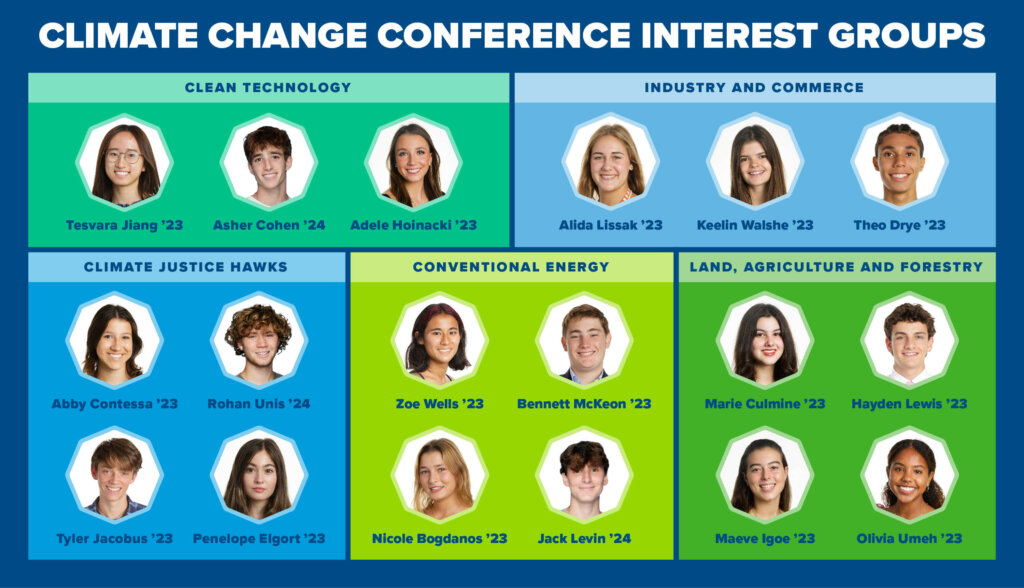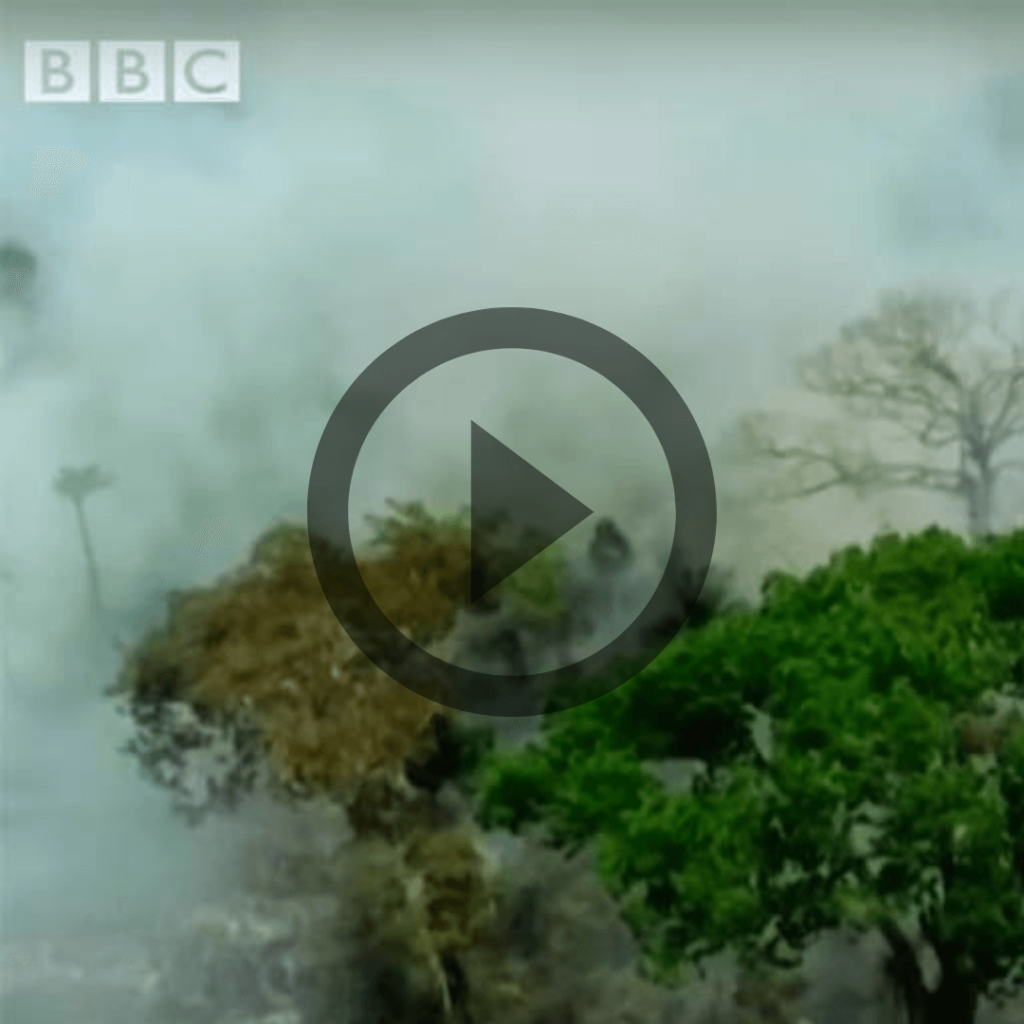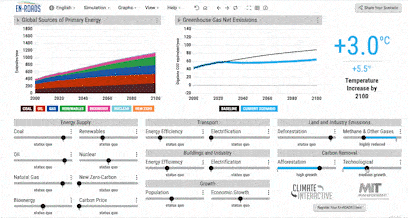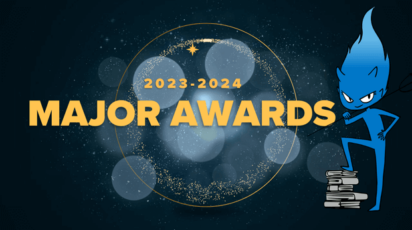News
What does it take to negotiate a climate deal? We got a glimpse of what Upper School students experience in Dr. Ramesh Laungani’s Conservation Biology elective where the class participated in a Mock Global Climate Change Conference.
Over the span of three days, students representing five interest groups feverishly negotiated with one another to determine how to lower rising global temperatures. In the process, they learned that finding solutions to human-driven climate change is complex and achieving compromise among interest groups or countries is complicated and often heated.
For the conference, students used MIT and Climate Interactive’s En-ROADS simulator that allows students to see how changes to energy supply, transport, or land-use and industry carbon emissions (among other things) could slow the rise in global temperature by the year 2100.
Teams at the Table

In the persona of UN Secretary General Dr. Climateson Solvercan, Dr. Laungani led the conference.
Eye on Two Degrees
Over the course of the summit, students worked together to promote global policy changes that would keep the earth from warming more than two degrees Celsius, considered the “tipping point” by the Intergovernmental Panel on Climate Change (IPCC) which could profoundly affect life on our planet: harsher storms, sea-level rise, the extinction of animals and plants, among many other consequences.
Students began working within their particular interest group to develop an ideal scenario given particular priorities that they were given before the start of the conference, “This ‘within group’ day” explained Dr. Laungani, “allowed them to dig into the details of the En-ROADS simulation “sliders” to see which policies they would need to put in place to achieve their group’s specific goals.”
Proposals and Negotiations
Over the course of the next two days, the different interest groups proposed policies from their particular vantage points resulting in a passionate debate of conflicting ideas. The students quickly learned that to accomplish their own groups’ goals, they would have to compromise.
In round after round of negotiations and sidebar deals, groups took turns making policy proposals about which sliders in the simulator they wanted to be moved in what direction in order to lower global temperature. They knew they would all have to reach a consensus and sign a global agreement – their own version of the Paris Climate Agreement.
“Our team had to do enough research to be able to explain each of our proposals,” said Clean Technology’s Tesvara Jiang ‘23. “Without adequate reasoning for our actions, it would be easy for another group to counter and reverse our actions.”
The all-important temperature rise indicator in the simulator fluctuated as more groups weighed in. At the start of negotiations on the final day, the pressure was mounting. The rise in temperature stood at +2.3 degrees Celsius – still above the goal of +2 degrees Celsius.
In a lively discussion, the Industry and Commerce, Land, Agriculture and Forestry, Climate Justice debated the year that a coal tax should begin to allow more time for investment in new technology along with shifting efforts around afforestation in order to lower global temps and decrease greenhouse gas emissions. The Climate Justice Hawks group pressed to move to more highly subsidize renewables.
Just when it looks like the degree goal has been met, Jack Levin ’24 from the Conventional Energy group counters, “A lot of developing countries are using high rates of carbon emissions and to place carbon prices on countries that don’t have the resources and technology to reduce carbon in their production, you are keeping the richer countries richer and the poorer countries poorer.”
In the Clean Tech group, Jiang said, “Our priorities included electrifying all industries, investing in renewable energy, and taxing fossil fuel energy sources. Having to adhere to these priorities was the major stumbling block in reaching compromises with other interest groups.”
At last, students reached their goal of +2.0 degrees Celsius.
“I really appreciated when students would collaborate on combinations of sliders to lead to a particular outcome,” Dr. Laungani reflected. “Those collaborative moments can never be predicted, but are always really surprising and satisfying to see as an educator. I get to see the students working together to reach common goals.”
Conference Debriefing
In a debriefing session after the close of the conference, Dr. Laungani, who shed the alter ego of Dr. Solvercan, asked the students to “sit, think, reflect on what we did….You came to a global agreement!” It was another milestone for Dr. Laungani. This Poly class is his first class, (including his former college students), to have achieved the +2.0 degrees Celsius mark in the conference.

The students also recognized the complexities of reaching a global agreement. “In the most recent COP [United Nations Climate Change] conference,” Igoe said, “there were over 200 countries there and they had to decide on an outcome in four days while in our conference there were only five group scenarios.”
Does Dr. Laungani think students came to a real-world awareness of just how difficult the fight against climate change is?
“I think that they recognized a few things,” said Dr. Laungani, “There is no silver bullet solution to solving climate change; compromise is tough, but needed, and possible; there are many ways, with our current set of tools, to address this global challenge. One student highlighted that not every country has to do all the sliders as they laid out, but different countries could do different parts of this global plan to achieve a common global resolution to this challenge; sometimes 0.1 degree of change is difficult to achieve, but also each 0.1 degree of change is important as well for the future of the planet and for the future of humanity, and through this exercise the students at Poly got to see this firsthand and envision how to build the world that they want to live in.”
Scientists Urge ‘Ramp-up’ of Climate Change Fighting Technology
For more information about using technology to remove planet-warming greenhouse gas from our atmosphere, Dr. Laungani recommends this article, also from the BBC.




